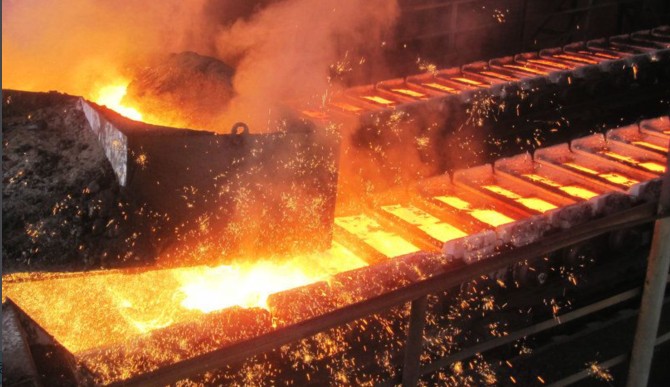Carbon steel is a metal alloy that is formed as a result of combining iron and carbon. Steel typically is considered to be carbon steel when the proportions of other trace elements in it do not exceed certain percentages. The maximum percentages typically are 1.65 percent for manganese and 0.6 percent for copper and silicon. The copper percentage must be at least 0.4 percent. The properties of carbon steel are high hardness, strength, wear resistance and anti-corrosion. The percentage of carbon in the steel affects the hardness, strength of elasticity and ductility of carbon steel.

Manufacturers add carbon to iron to solidify the structures in it and strengthen the resulting metal. It’s one of the most cost-effective alloying materials, and altering the amount of carbon changes the properties of the steel. Carbon steels can be classified as low-carbon steels, medium-carbon steels, high-carbon steels and ultrahigh-carbon steels.
Steels with very low amounts of carbon, about 0.05 percent to 0.3 percent, are called low-carbon steels. They are very ductile, which makes them hard to machine. They are used to make flat-rolled sheets or steel strips that are utilized to create ships, wire products, car bodies, domestic appliances, tin plates and more. Low-carbon steels cannot be altered by heat treatment, which is why they generally are used for fabrication and paneling purposes.
Medium-carbon steels have a higher carbon content of about 0.3 percent to 0.6 percent. These are easier to machine, and some manufacturers add a little silicon and manganese to the steel to improve its quality. These steels are cheap and are used to make things such as axles, gears, shafts, rails, pipelines and couplings.
High-carbon steels are very hard to weld because they contain carbon in the range of 0.6 percent to 1.0 percent. They also have higher proportions of manganese, which is added to increase the hardenability of the steel. High-carbon steel is very susceptible to heat, and it easily flame hardens, which allows it to be worked into many different forms. High-carbon steels have greater tensile strength and are used to create products such as cutting tools, blades, springs and high-strength wires.
Ultrahigh-carbon steels possess carbon in the range of 1.25 percent to 2.0 percent. It’s not possible to cold work this type of carbon steel, because it is quite brittle. Ultrahigh-carbon steels are used to create components requiring extreme hardness, such as blades, cutting tools and large parts. They are very sensitive to heat and possess good machinability and superior wear resistance.
Carbon steel is the almost exclusive choice of pipeline designers. Carbon steel pipe has the advantage of wide availability, high strength, and a large array of connection possibilities, for example, screwed, socket-welded, and butt-welded. It is used for liquid, gas, and steam services both above- and belowground services.
